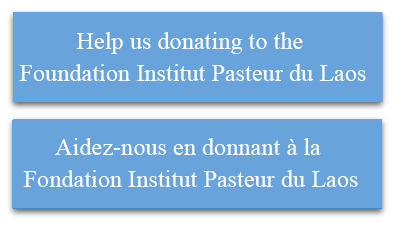Measles and rubella
Measles is a highly contagious disease affecting more than 20 million people each year. It was estimated that in 2011 about 158 000 deaths were related to measles virus infection. The majority of these deaths (> 95%) occur in resource poor countries with suboptimal health systems and are due to complications such as encephalitis, severe diarrhoea or pneumonia. Vaccination with one dose of measles containing vaccine has been carried out for nearly 30 years in Lao PDR. The estimated routine measles vaccine coverage rates were 52% in 2008; far below the global average of 83% and far below the 95% coverage required to interrupt measles virus transmission. Figures from the Lao Ministry of Health suggest that the vaccination coverage in 2011 was still below 70%.
Infection with rubella virus normally leads to the development of a maculopapular rash with low fever and few complications. However, infection during pregnancy may cause the death of the foetus or severe congenital diseases (congenital rubella syndrome, CRS) in the infant. These congenital infections can affect virtually all organs, but ear, heart and eye defects are the most common manifestations. Rubella vaccines have been included for the first time national immunization in the campaign in 2011/2012 in Lao PDR.
Not much is known about the measles and rubella seroprevalence in Lao PDR. In particular, there are no age stratified measles and rubella seroprevalence among different age groups and between the geographical regions of Lao PDR.
As the WHO Western Pacific Region has committed itself to eliminate measles in the region, a population immunity of 95% needs to be achieved. To substantially improve the population immunity to measles in Laos, a supplementary immunization activity (SIA) targeting about 3 million people between 9 months and 19 years of age was carried out at the end of 2011 using combined measles and rubella vaccine.
To assess the seroprevalence in the different target age groups of the SIA and in a cohort of pregnant women, LaoLux Lab collected serum and oral fluid samples from over 2000 donors between 9 months and 19 years and from pregnant women above the age of 19 years from different geographical regions in Laos prior to the SIA. In order to assess seroconversion following SIA, a second sample from the same people was obtained about 3 months after vaccination. These data will provide valuable information on the seroprevalence before vaccination, vaccine efficiency in different age groups and geographical regions and on the rubella virus circulation and the risk of CRS in Lao PDR. The success of the SIA will be estimated on the basis of the second sample and potential problems related to the campaign will be identified. The results of the study will prove useful to decide on future strategies for both measles and rubella control in Lao PDR.






